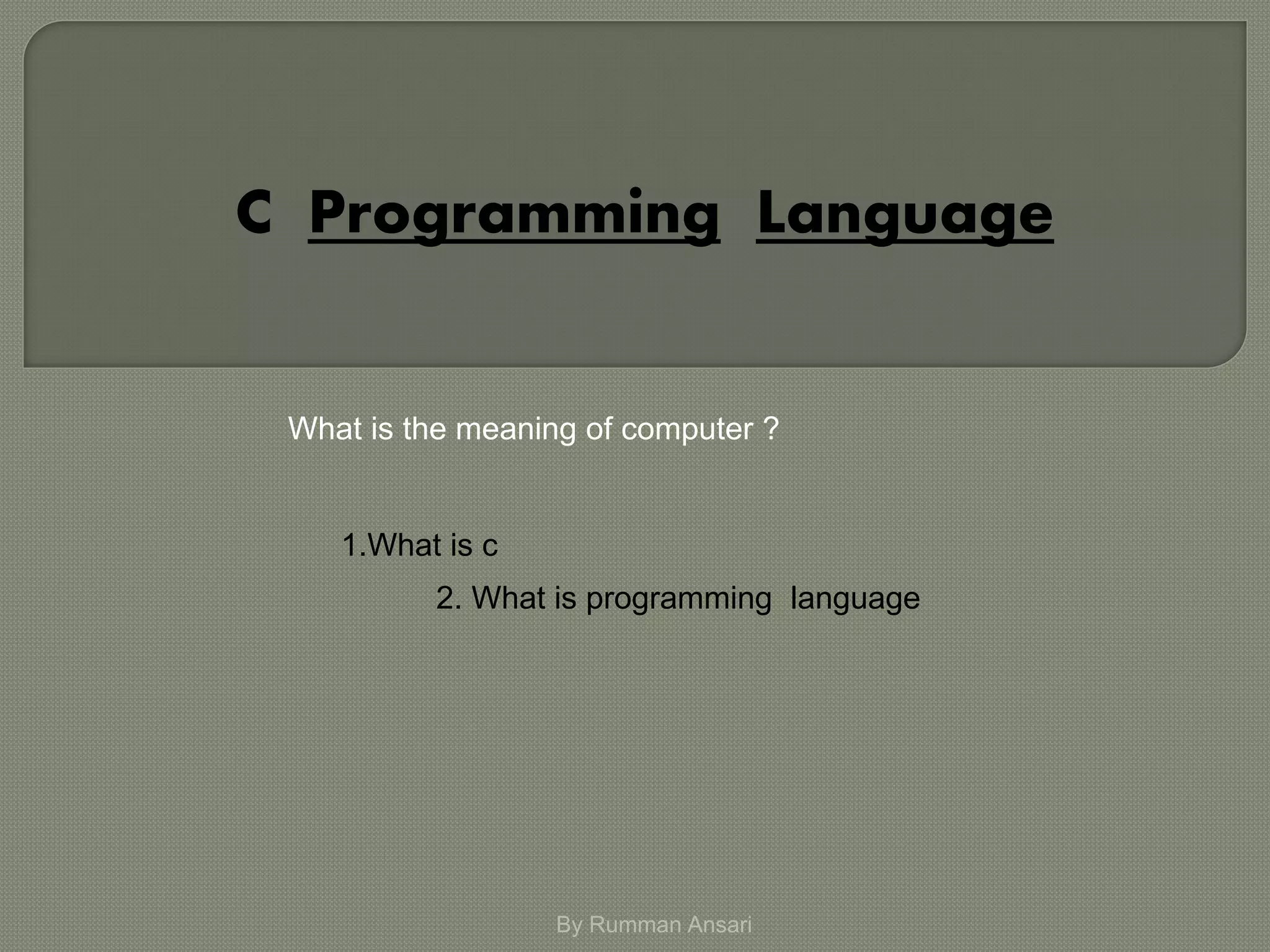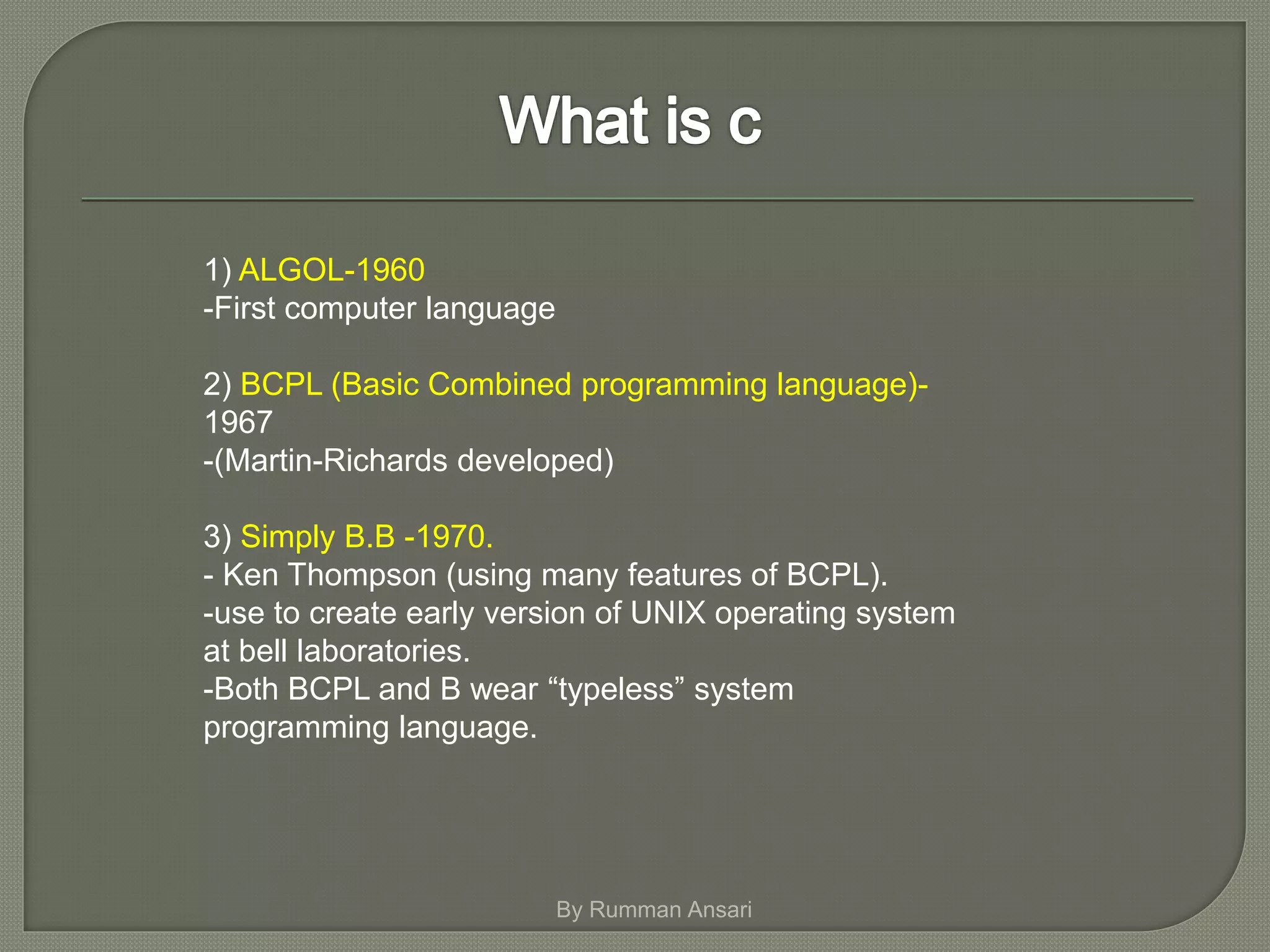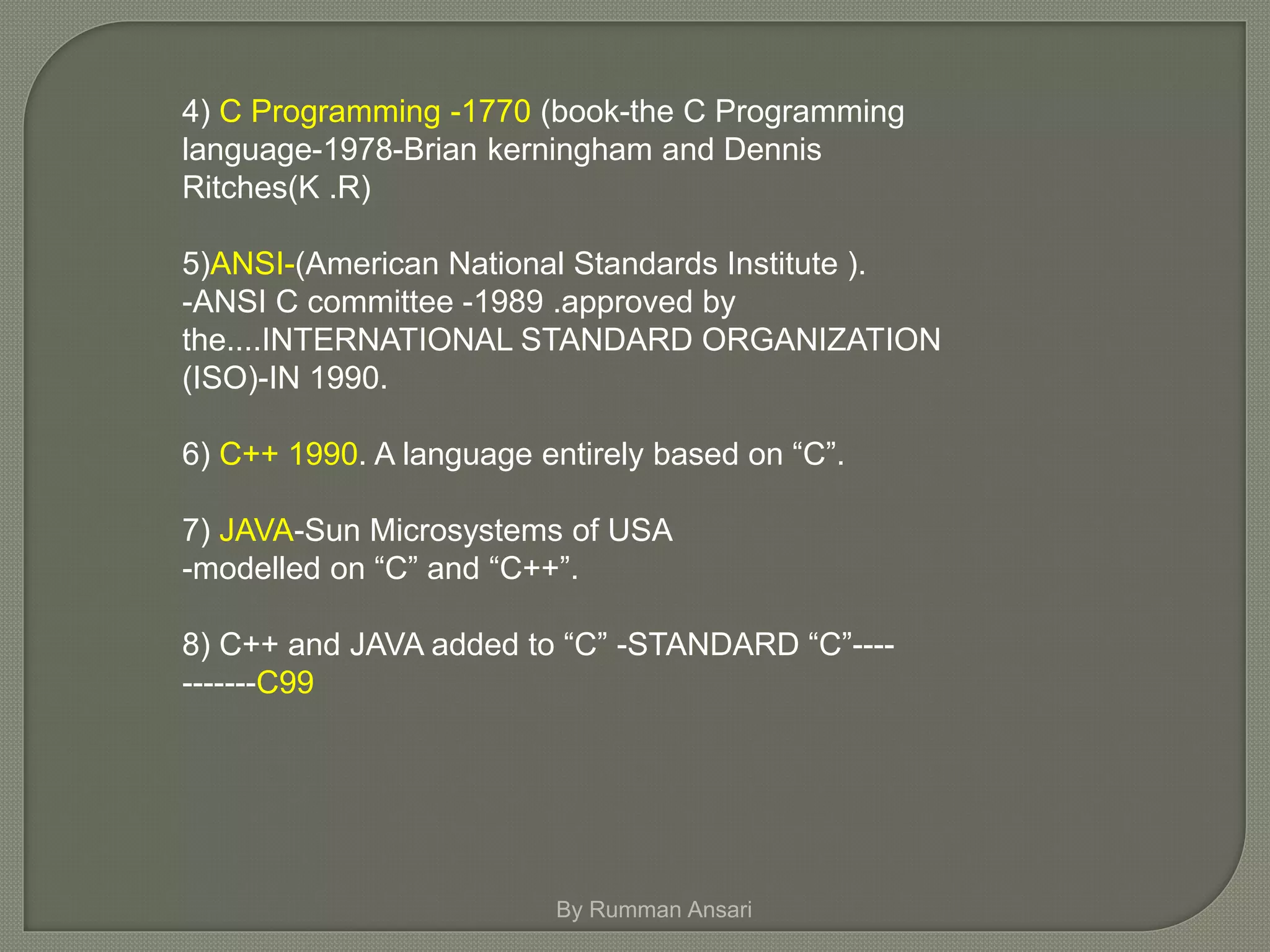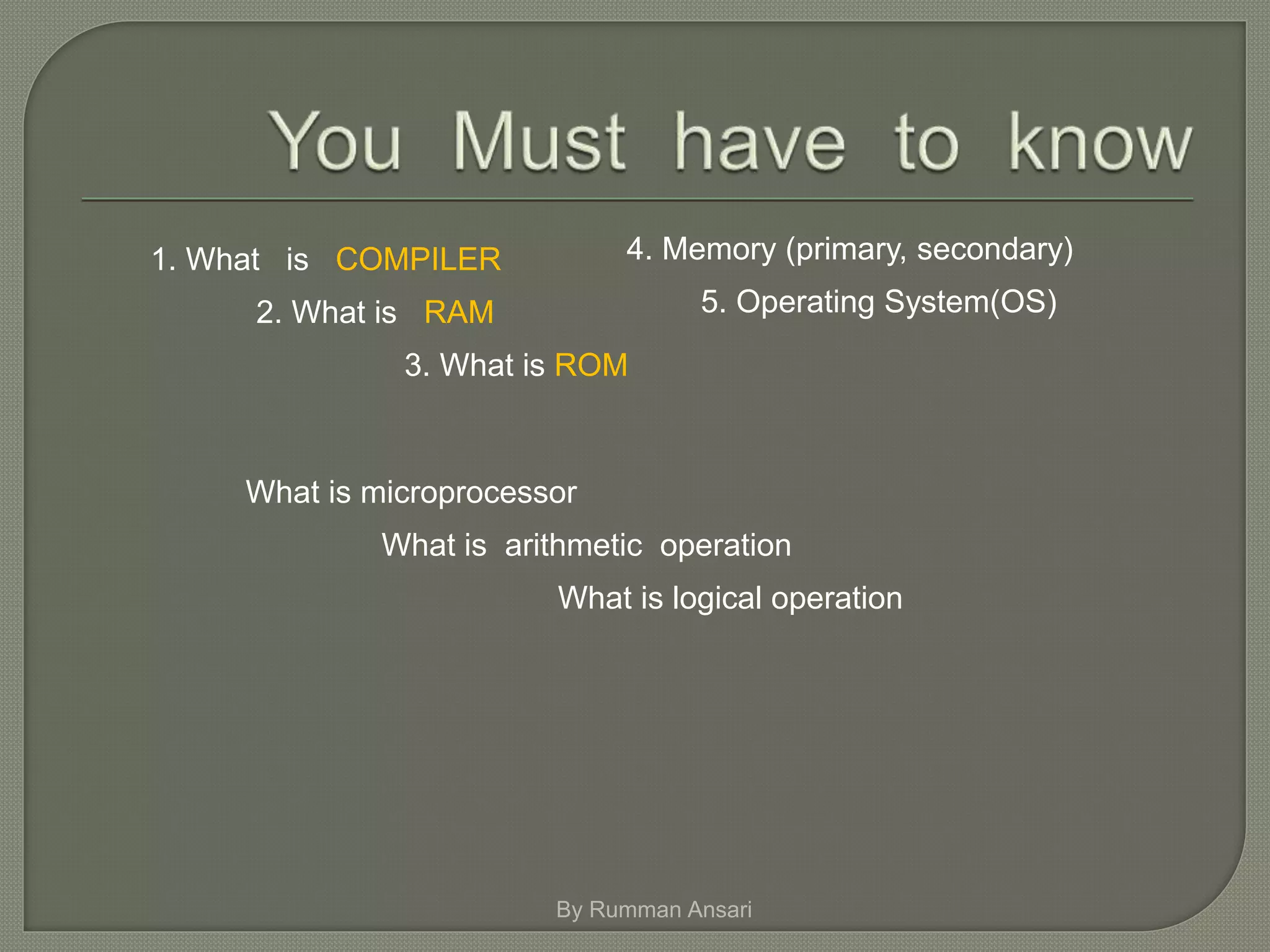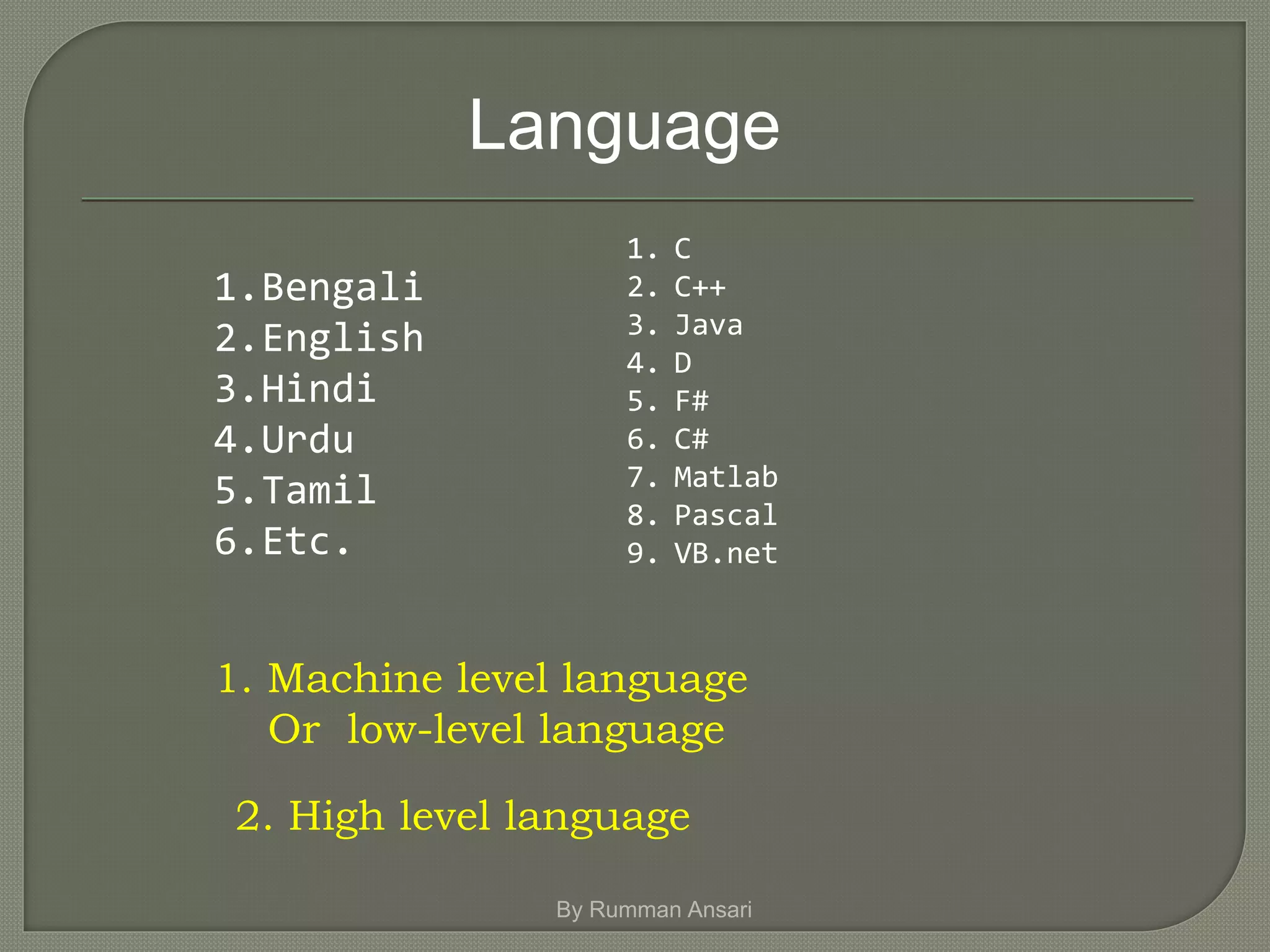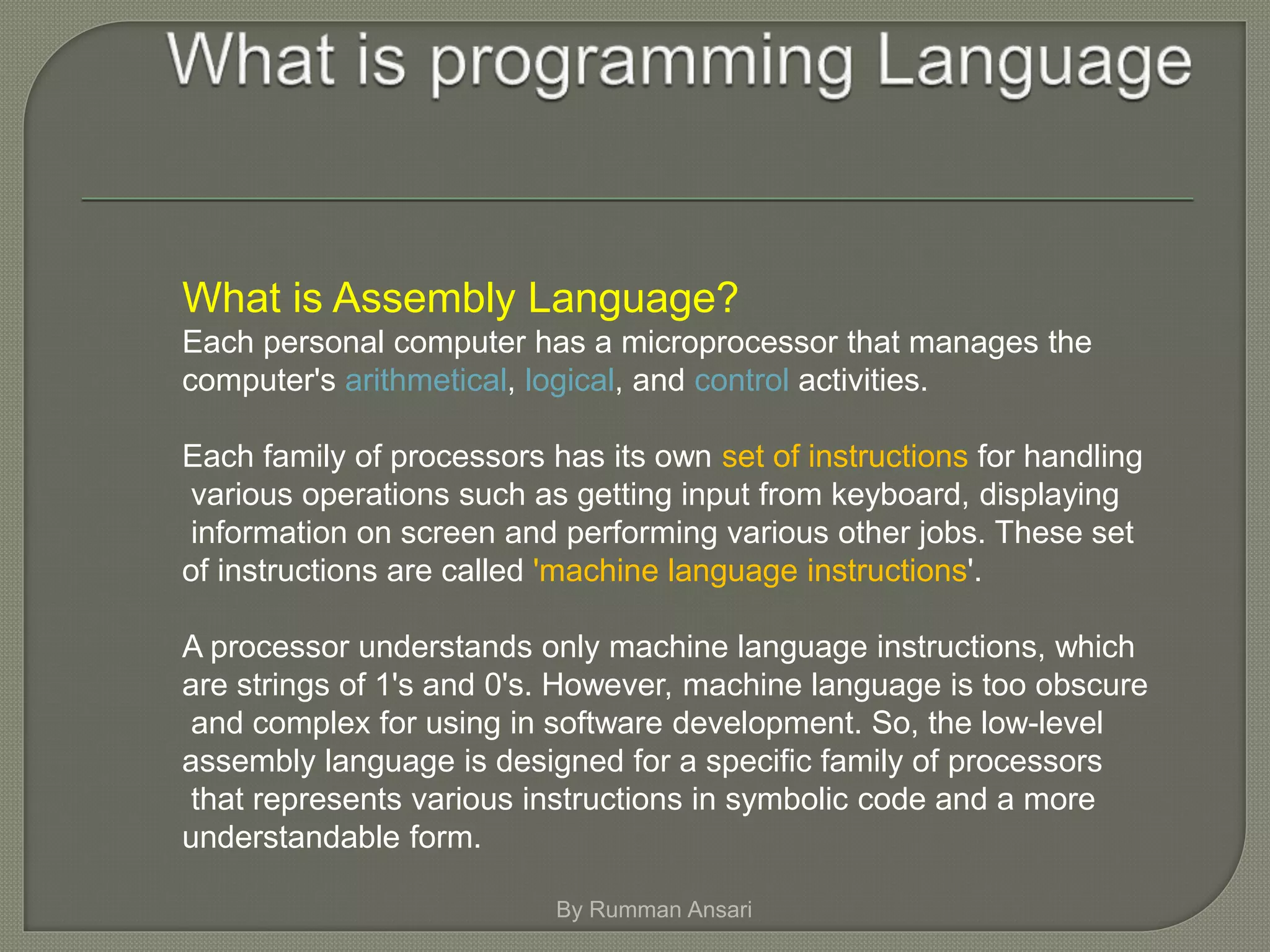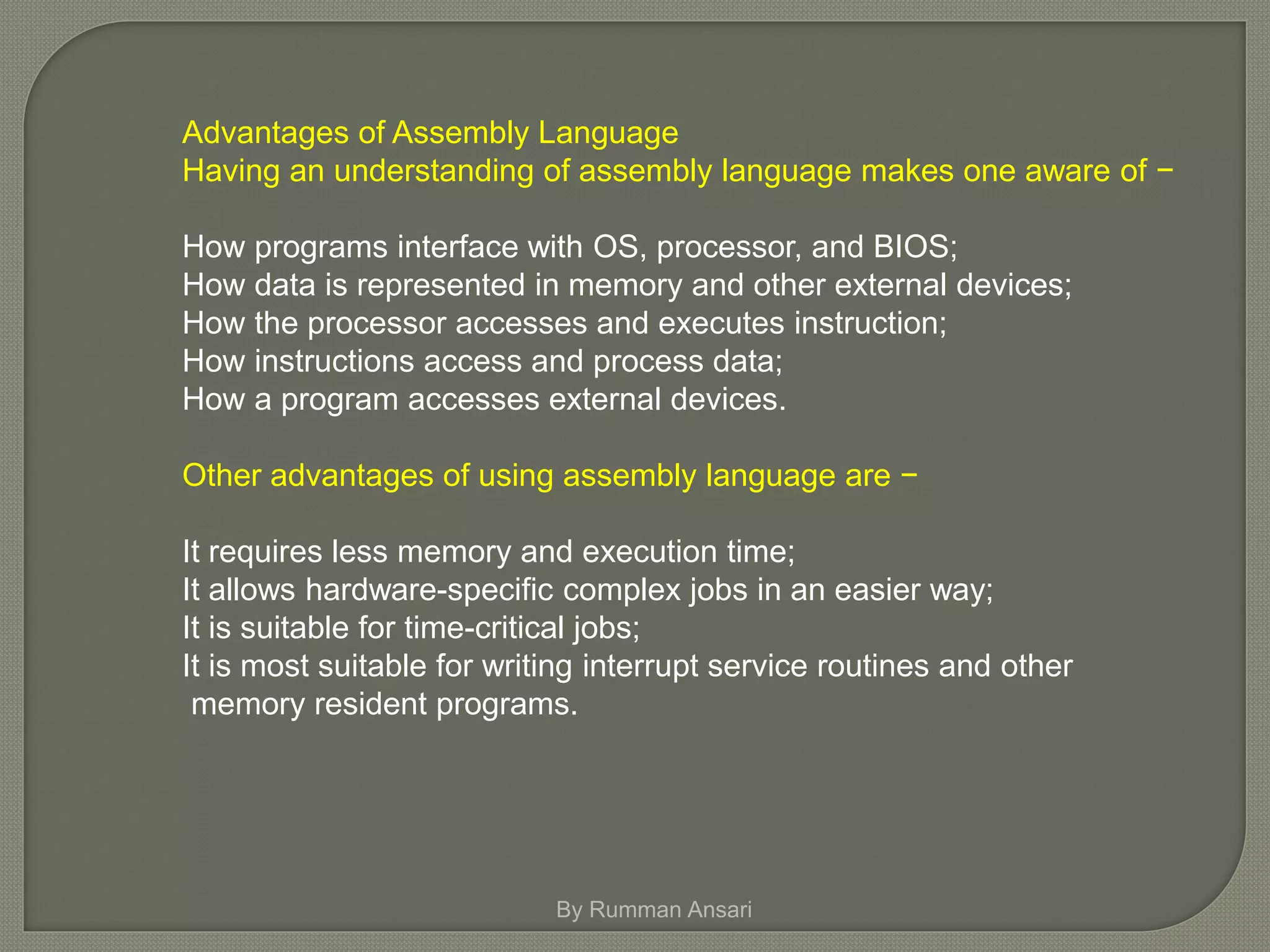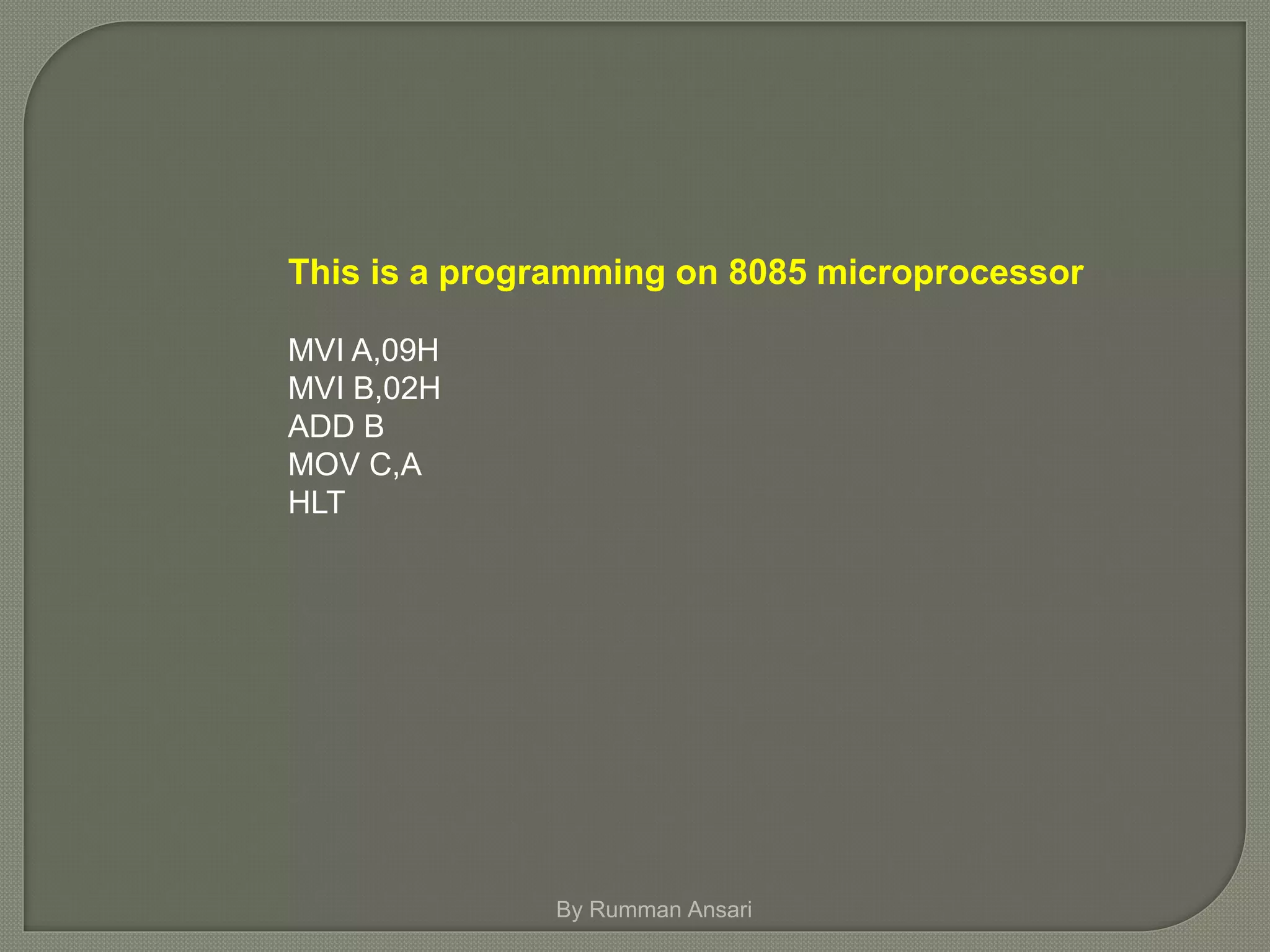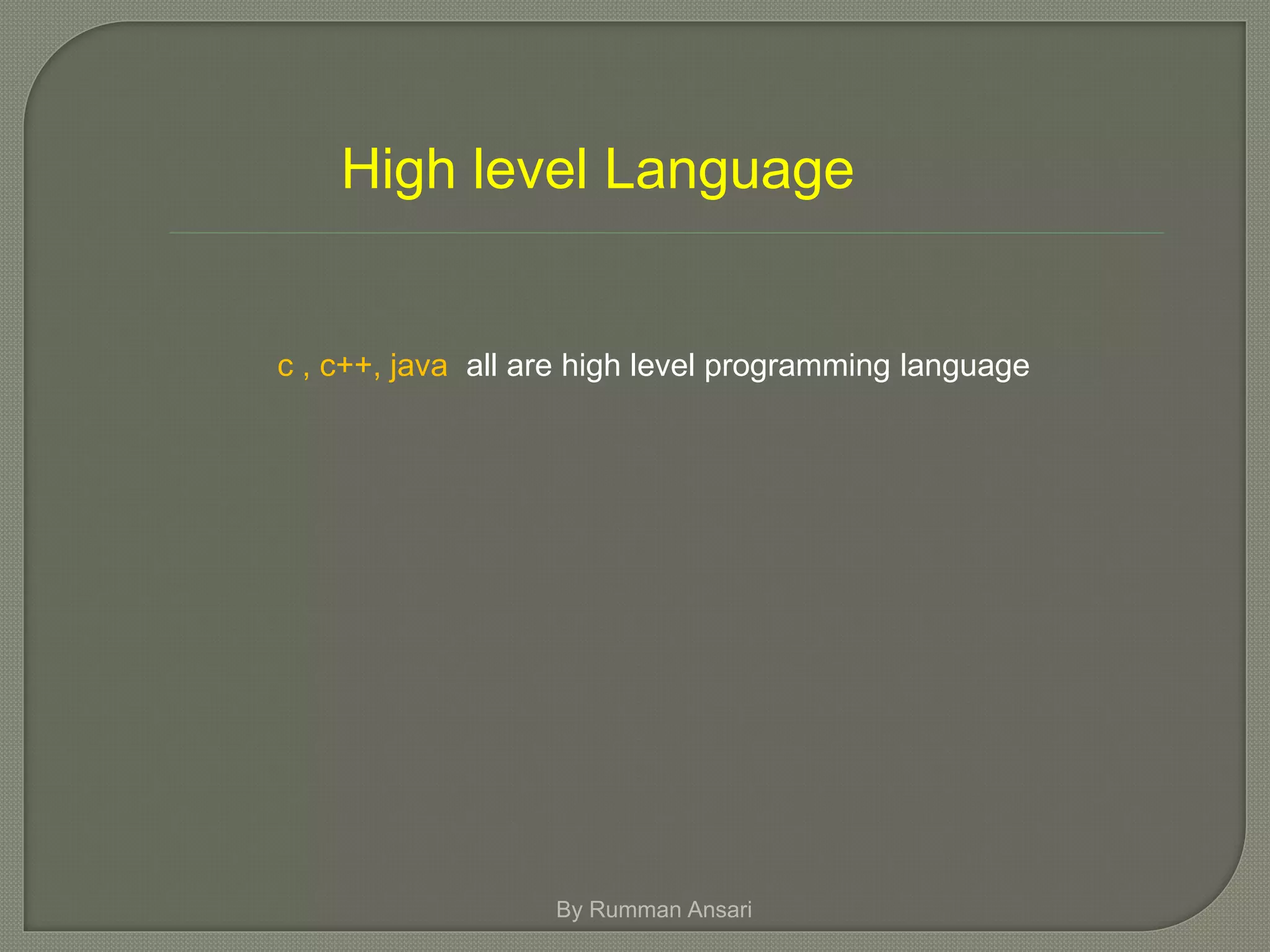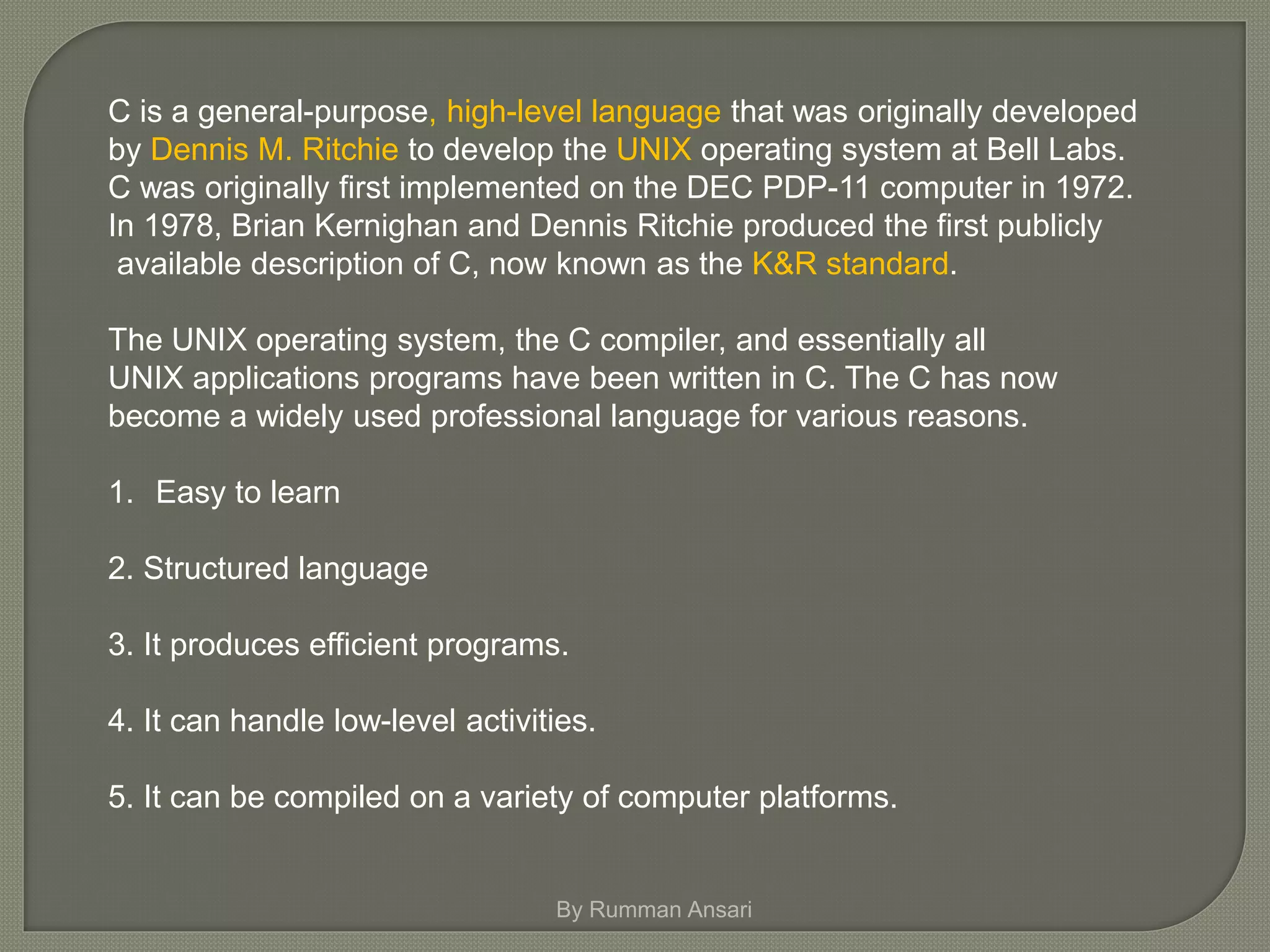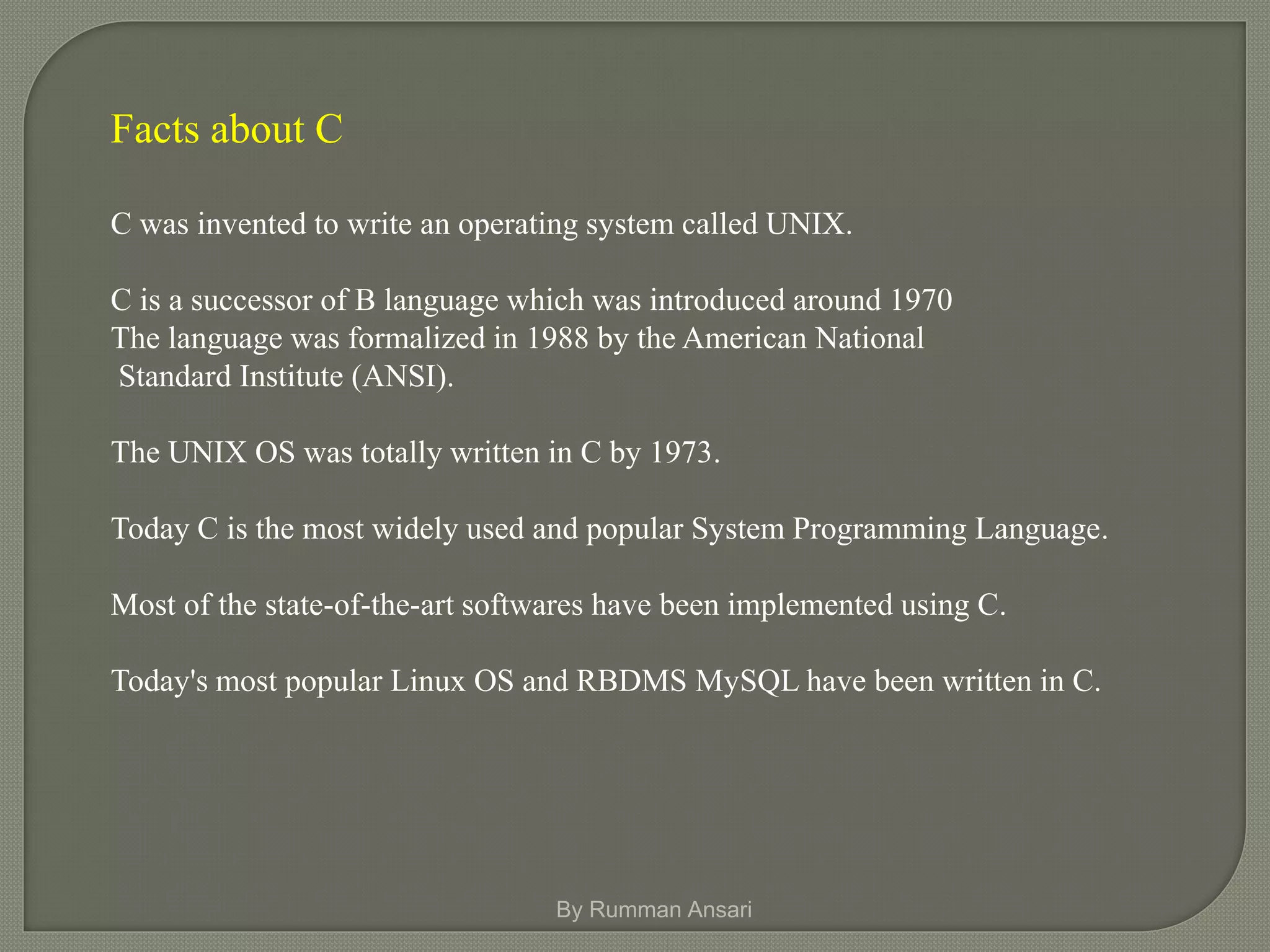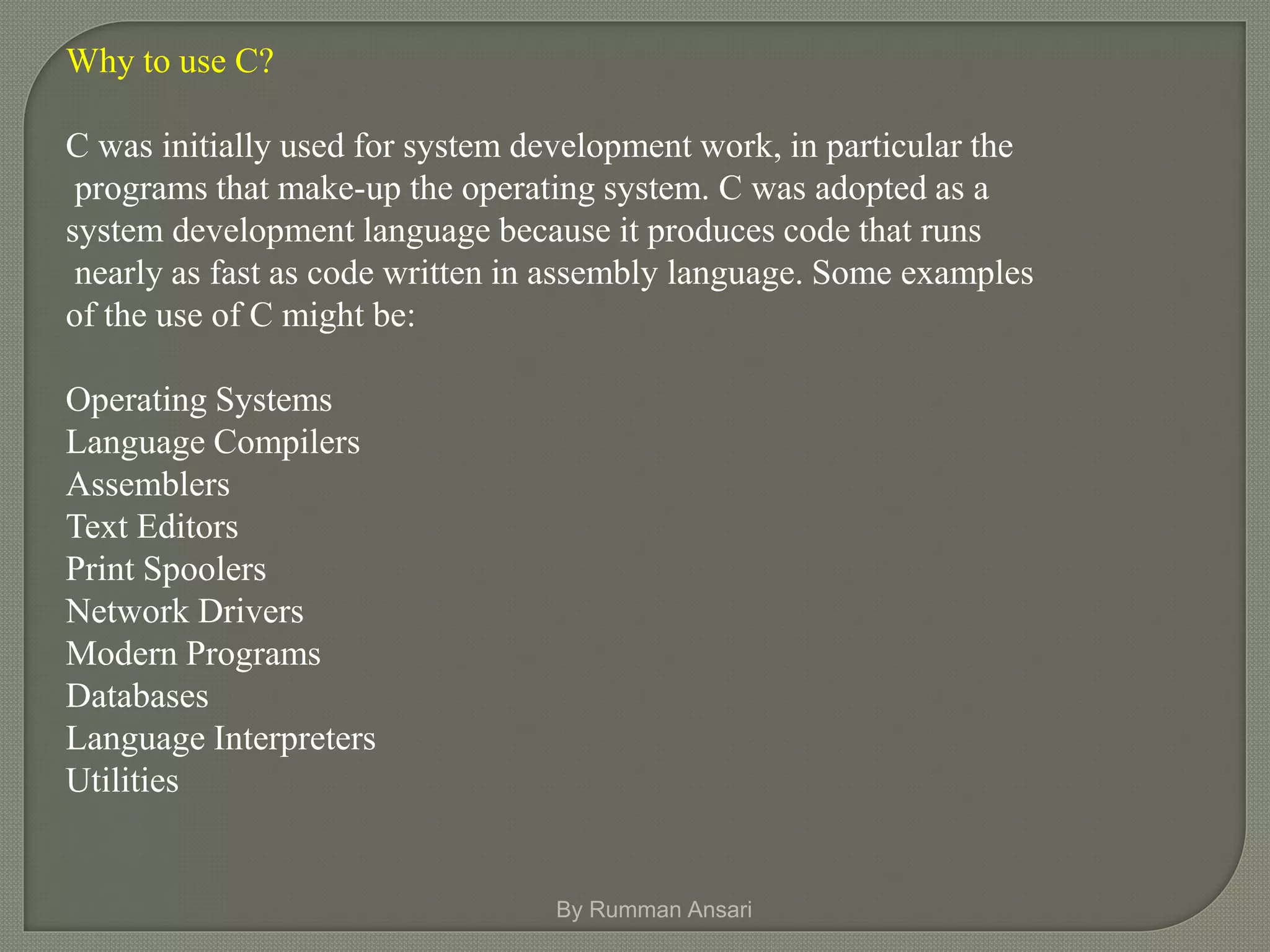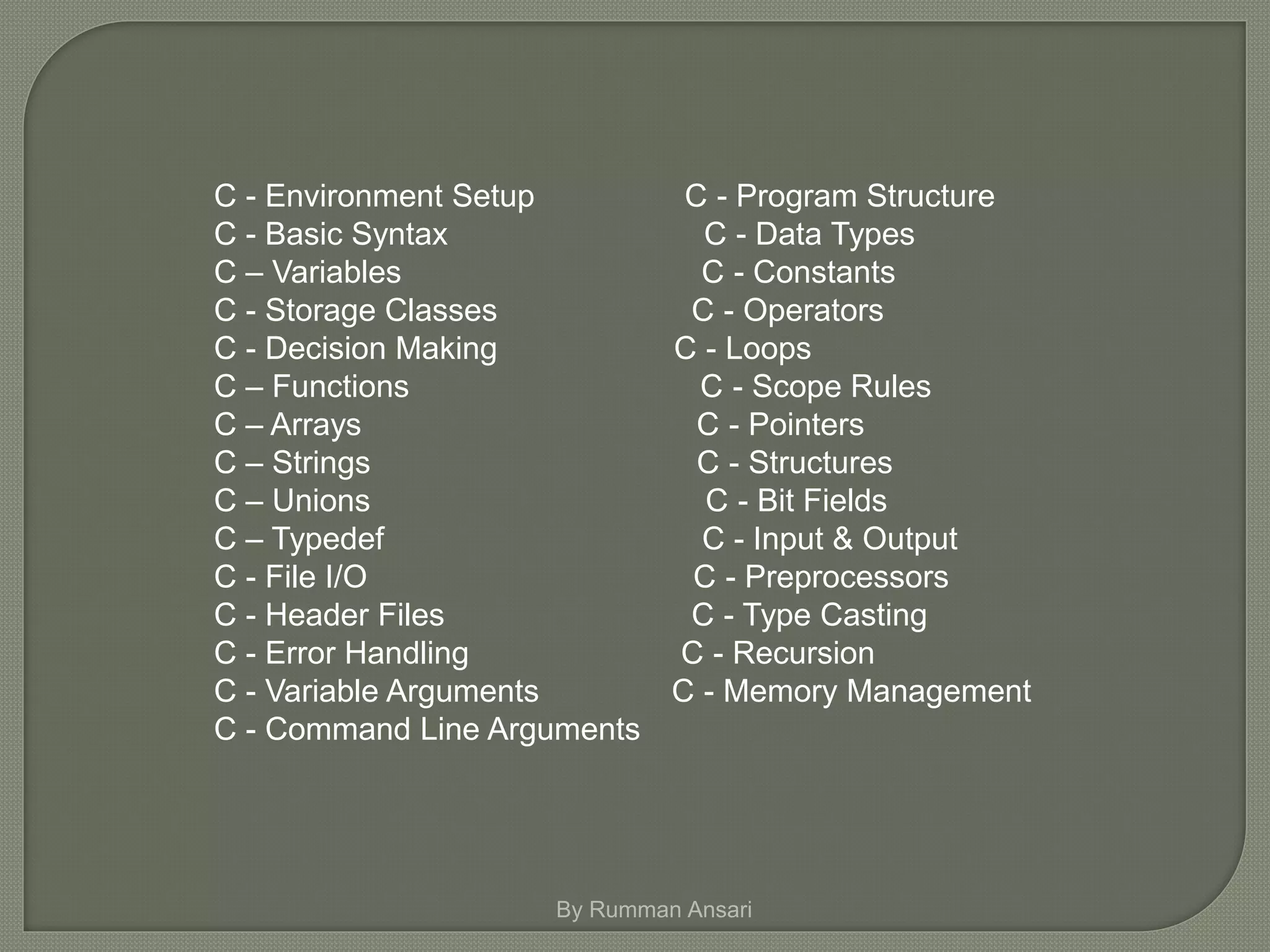This document provides an overview of the C programming language. It discusses the history and development of C, starting with predecessors like ALGOL-60 and BCPL in the 1960s and 1970s. C was created in the early 1970s and the first C compiler was released in 1978. Since then, C has become widely used for system programming and is foundational to many other languages like C++ and Java. The document outlines some key advantages of C, like its efficiency and ability to handle low-level tasks. It also provides brief descriptions of common C programming concepts.
